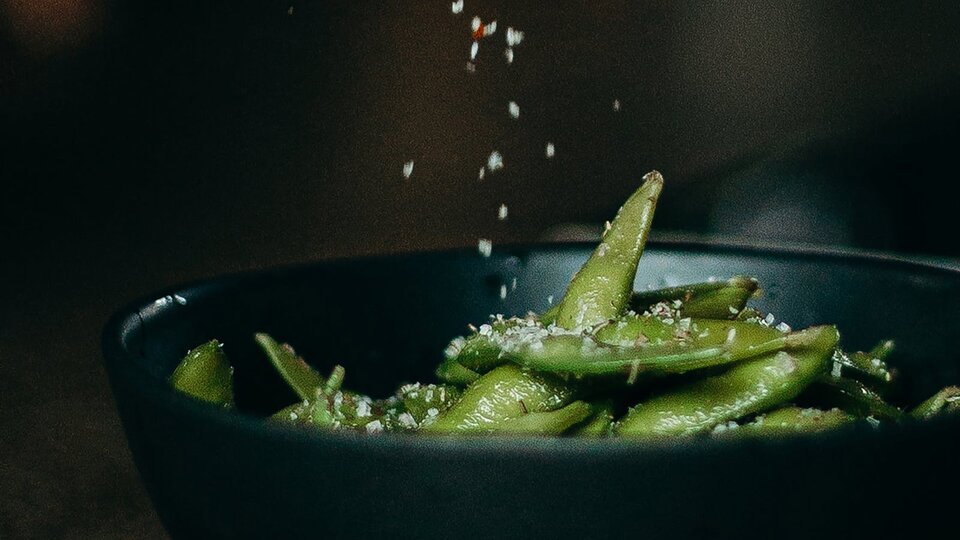You may think hydration means just drinking more water, but you should actually focus on proper electrolyte balance. Although optimal daily water consumption can vary greatly between people, many experts recommend that total daily water intake from all sources should be around 8 to 12 glasses of water (1). However, fluid intake is only one side of the equation, because proper hydration is based on an optimal ratio of water and electrolytes in your body.
Having too little water or having too much water can lead to serious health conditions, especially during bouts of intense exercise. Research has shown that there is a “J-shaped relationship” between cardiovascular risk and sodium, demonstrating that very low-sodium diets and very high-sodium diets both carry a higher risk of heart disease (2).
Normal blood sodium level should be between 135 to 145 milliequivalents/liter (mEq/L). If you drink too little water or consume too much salt, your blood sodium level could rise above 145 mEq/L and you will experience hypernatremia which is characterized by nausea, dizziness, sleepiness, and/or muscle weakness (3). If you drink too much water or consume too little salt, your blood sodium level could fall below 135 mEq/L and you will experience hyponatremia which is characterized by fatigue, headache, muscle cramps, cognitive impairment, seizure, or even death (4)(5).
The media has proposed that 75% of adults are chronically dehydrated. However, this is not supported by the medical literature (6). To determine if you are less than optimally hydrated, you should have one or several of the following signs of dehydration: dry lips, dry tongue, dry mouth, thirst, swollen hands, dizziness, headache, lethargy, elevated blood pressure, or dark color urine (7). Another strong indicator of dehydration can include not drinking at least six cups of water, eating more than 2,300 mg of salt per day, excessive sweating, intense diarrhea, or constant vomiting (7)(8).
If you feel like you drink lots of water but still feel dehydrated or thirsty, you may be drinking too much water and not consuming enough salt. Many individuals who drink more than 12 cups of plain water or consume less than 900 mg of sodium can experience similar symptoms to dehydration (9). Some people drink beyond their thirst and actually dilute their blood sodium levels causing excess water to move into your body cells which can cause swelling or bloating (10).
If you do not drink enough water, you should avoid consuming electrolyte drinks, sport drinks, gatorade, pedialyte, coconut water, salty soups, diuretics, or anything with excessively high sodium content. If you are drinking plenty of water, sweat profusely during exercise, or avoid salt, an electrolyte supplement can help you maintain fluid balance by properly distributing water throughout the body.
Electrolytes are essential for basic cellular functioning of the human body (11). They include sodium, potassium, calcium, magnesium, chloride, and phosphate (12). If your electrolyte levels are off, it can negatively affect the electrical charge of your cells which can affect your hydration, body temperature, pH levels, glucose levels, heart rhythm, muscle contractions, and overall nervous system.
Sodium is essential for the proper functioning of the human body by maintaining cellular homeostasis, maintaining extracellular fluid balance, regulating blood pressure, and overall electrolyte balance. Potassium is important for multiple intracellular interactions such as membrane potential and electrical excitation of both nerve and muscle cells (13). Calcium is vital for fortifying bones, contracting muscles, transmitting nerve signals, blood clotting, and releasing hormones (13). Magnesium is involved with metabolism, muscle contraction and relaxation, glucose regulations, bone development, and neurological functioning (13). Chloride regulates cell volume, smooth muscle cell contraction, and synaptic transmission, pH balance, muscle activity and immunity (14). Phosphorus is regulated by the kidneys and has a crucial role in metabolic pathways, replicating DNA and RNA, and is the energy source for adenosine triphosphate (ATP) pathways (14)(15).
If you are in the low electrolyte camp, simply adding electrolytes to your routine can be the best way to increase athletic performance, reduce electrolyte loss during cardiovascular activity, prevent symptoms of dehydration, and improve your overall wellness. To increase your salts levels, you can easily buy a number of commercial electrolyte powders such as Kaged Hydra-Charge, 6am Run Hydrablast Bcaa, or Ryno Power Electrolytes Capsules. You can also make your own oral rehydration therapy, by adding electrolytes and glucose to drinking water. Here is a recipe based on recommended formulation by World Health Organization (16):
World Health Organization Recipe
- 32 oz of Water
- 1/2 tsp table salt (sodium chloride)
- 1/4 tsp Morton Salt Substitute® (potassium chloride)
- 1/2 tsp baking soda (sodium bicarbonate)
- 2 tbsp sugar or glucose based sweetener
Get your hydration in check and watch your performance improve.
Works Cited:
-
https://www.nhlbi.nih.gov/news/2023/good-hydration-linked-healthy-aging
-
https://www.sciencedirect.com/science/article/pii/S0939475318303521
-
https://www.ncbi.nlm.nih.gov/books/NBK470386/
-
https://www.fda.gov/food/nutrition-education-resources-materials/sodium-your-diet
-
https://www.ncbi.nlm.nih.gov/books/NBK541123/
